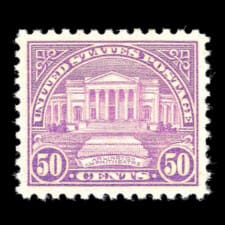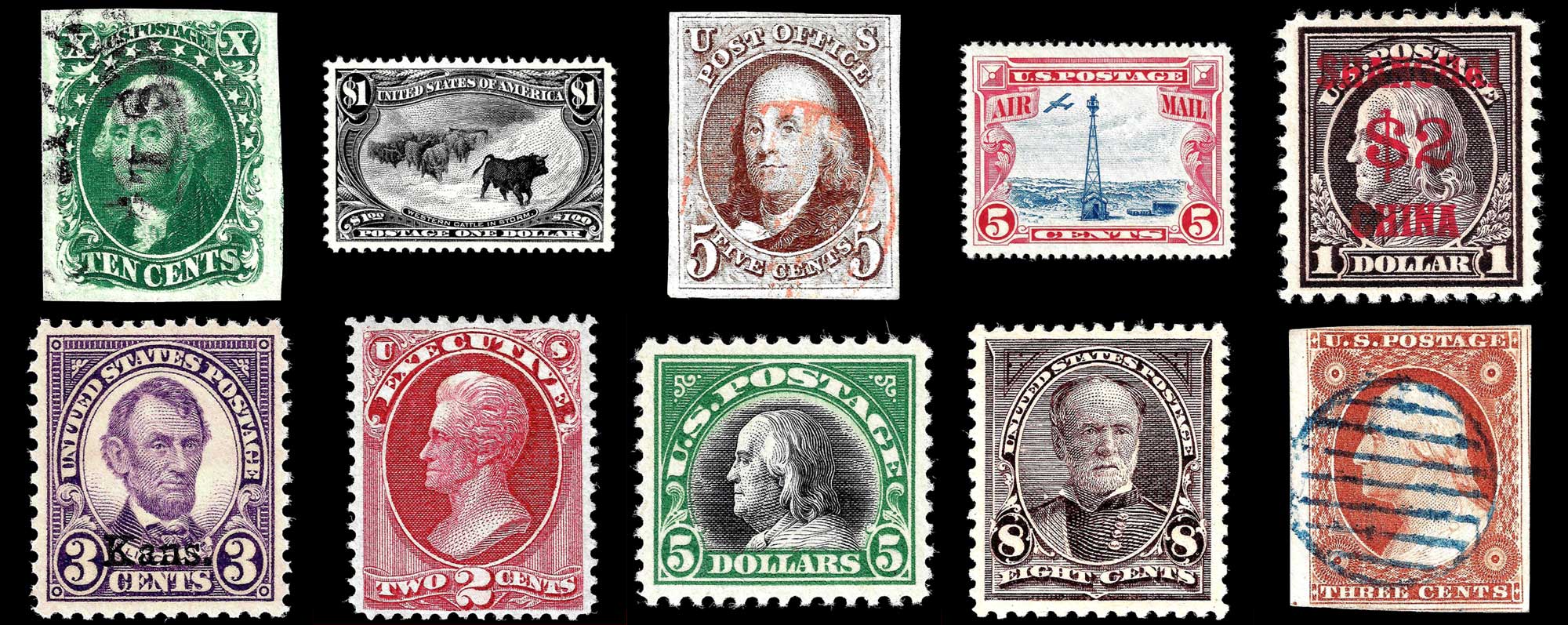View Stamp Values
Online For FREE!
It’s never been easier to look up stamp values by Scott Stamp Catalog number. Our Fair Market Values (FMV) may differ from the values provided in the Scott Catalog, because they are based on actual sales and condition factors such as degree of faults, cancel strength, hinge strength, and more — making them more closer to actual market value.
Our goal is to provide collectors with expanded stamp values. We are not attempting to replace the Scott Stamp Catalog, but rather supplement it with realistic market values based on these critical condition factors.

What Is A Scott Stamp Catalog?
The Scott Stamp Catalog is the go-to guide collectors use to look up and identify stamps from around the world. It gives each stamp its own Scott Number, lists key identification details, and provides estimated stamp values.
How To Get A Scott Stamp Catalog
You can easily order a Scott Stamp Catalog directly from their publisher Amos Media Company. It comes in both printed versions and digital versions.
Available Scott Stamp Values
Simply click on a Scott Catalog number below to see it’s value. There are values for select United States issues and are continuing to regularly to the stamp value database, so be sure to check back often.
What Is A Scott Number? Scott numbers are unique ID’s given to each stamp to help identify and value it. If you’re not sure of the Scott number, use the free Stamp Identification App to look up values.
* The Scott Numbers are the copyrighted property of Amos Media Company, and are used here with permission from Amos. The marks Scott and Scott’s are Registered in the U.S. Patent and Trademark Office, and are trademarks of Amos Media Company. No use may be made of these marks or of material in this exhibition, which is reprinted from a copyrighted publication of Amos Media Company., without the express written permission of Amos Media Company, Sidney, Ohio 45365
Unique Scott Numbers
{{Total Scott Numbers}}
Total Stamp Values
{{Total Value Records}}
Identification Pages
{{Total ID}}
Search for numbers only, index or suffix letters are ok ie. C3 or 64a. Do not include additional text, hashtags or symbols. To search for Confederate issues use the prefix CSA with no spaces, for example CSA4. For Canal Zone use the prefix CZ, for example CZ90. For Guam use the prefix GU, for Hawaii use HI, for Philippines use PH, for Puerto Rico use PU.
Scott Numbers With Values
Numbers with prefix CSA indicate Confederate issues, CZ is Canal Zone, GU is Guam, HI is Hawaii, PH is Philippines, PU is Puerto Rico.
| {{Scott Sorted}} |
Available Stamp Identification Pages
These Stamp Identification pages have even more information available, such as history, identification details, varieties and more. Click on a Scott Stamp Catalog number below to view it’s dedicated page. Or view the Stamp Identification App to browse through them all.
Stamp Identification Pages
What Is A Scott Number?
Scott numbers are unique identification codes that help identify a specific stamp. The Scott Catalog is the most acknowledged and referenced stamp identification guide in United States stamp collecting.
Stamp valuation fundamentally relies on stamp catalogues, such as the Scott Catalog, Stanley Gibbons, and Michel. These publications offer extensive information on global stamps, including descriptions, images, and estimated values based on condition and rarity. Collectors frequently consult these catalogs to gain an overview of a stamp’s potential value.
It’s important to understand that the values presented in these catalogs assume stamps are in Very Fine condition without any defects, which is often not the case.
Most stamps, particularly older ones, do not meet the Very Fine centering criteria, and many exhibit condition issues. Minor defects can significantly reduce a stamp’s value.
Consequently, the valuations listed in stamp catalogs do not always reflect the actual market value. These figures should not be taken at face value but rather used as a comparative tool to ascertain the relative worth of different stamps.

















